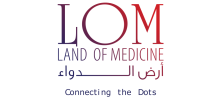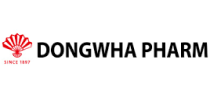HOME
-
LATEST NEWS
-
Corporate
-
Lumosa to commence a multi-dose Phase 1 trial right after the single-dose Phase 2 to expand stroke treatment methodology
Corporate
2020.12.14
Lumosa to commence a multi-dose Phase 1 trial right after the single-dose Phase 2 to expand stroke treatment methodology
LT3001 is a novel treatment for acute ischemic stroke (AIS), currently under development by Lumosa Therapeutics (Lumosa). The company will proceed with a multi-dose and drug-drug-interaction Phase I trial right after the enrollment completion of the single-dose Phase II study for LT3001. The study will help Lumosa to obtain safety data and pharmacokinetic parameters as the administration frequency is increased, to establish foundations for the coming Phase II multiple-dose trial.
The enrollment for the single-dose Phase II study conducted in the US and Taiwan on stroke patients was completed recently. The clinical study report is expected by Q3 of 2021. Earlier this year, Lumosa completed the Phase I, single-dose safety study for LT3001 on healthy volunteers; the result showed that LT3001 was well tolerated.
Brain stroke is one of several diseases that the medical community is trying urgently to resolve. Each year, there are about 15 to 17 million people in the world suffering stroke; among which, 80% of the patients are ischemic. The current treatment for acute ischemic stroke (AIS) is a thrombolytic agent named rt-PA. Unfortunately, the benefit of rt-PA is limited due to its high risks involving hemorrhage and short treatment time window - only 3%~5% AIS patients are treated with thrombolytics. Intra-arterial thrombectomy (IAT) was introduced in 2015 but can only be performed on patients with large-vessel occlusion, therefore the number of patients who can benefit from this procedure is low. Should LT3001 be able to address the limitations of current treatment regimen and achieve the target of treating 50% stroke patients set by the World Health Organization (WHO), the market size for LT3001 may reach as high as US$15 billion.
The enrollment for the single-dose Phase II study conducted in the US and Taiwan on stroke patients was completed recently. The clinical study report is expected by Q3 of 2021. Earlier this year, Lumosa completed the Phase I, single-dose safety study for LT3001 on healthy volunteers; the result showed that LT3001 was well tolerated.
Brain stroke is one of several diseases that the medical community is trying urgently to resolve. Each year, there are about 15 to 17 million people in the world suffering stroke; among which, 80% of the patients are ischemic. The current treatment for acute ischemic stroke (AIS) is a thrombolytic agent named rt-PA. Unfortunately, the benefit of rt-PA is limited due to its high risks involving hemorrhage and short treatment time window - only 3%~5% AIS patients are treated with thrombolytics. Intra-arterial thrombectomy (IAT) was introduced in 2015 but can only be performed on patients with large-vessel occlusion, therefore the number of patients who can benefit from this procedure is low. Should LT3001 be able to address the limitations of current treatment regimen and achieve the target of treating 50% stroke patients set by the World Health Organization (WHO), the market size for LT3001 may reach as high as US$15 billion.






